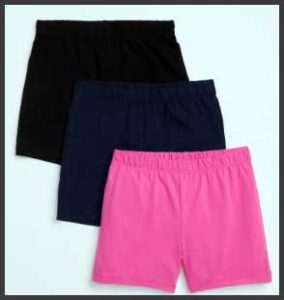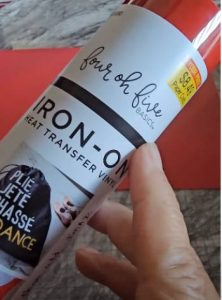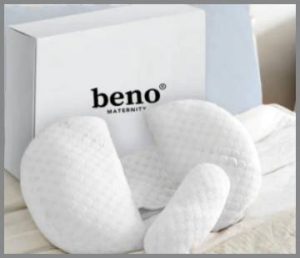Alright, let me level with you—Comfort Ortho Wear shoes sound like a dream on paper. Breathable fabric, arch support, slip-resistant soles? I was ready to toss my cash at them for my aching feet. But here’s the kicker: after trying them out, I’m not telling you to rush out and buy these. My experience—and a slew of disappointed reviews—left me skeptical. Sure, they’ve got some perks, but the downsides hit hard. If you’re eyeing these for relief from plantar fasciitis or long shifts, hold off. Let’s unpack why this might not be your golden ticket.
My Comfort Ortho Wear Story: A Real User’s Letdown
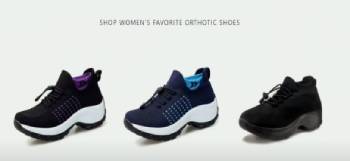
So, I’m a nurse—12-hour shifts, concrete floors, the whole deal. My feet scream by lunch, and I’ve been chasing a shoe to hush them up.
Comfort Ortho Wear popped up with promises of cushioned bliss and orthopedic magic. I ordered a pair, excited for that “cloud-like” feel they hyped. Day one, I slip them on—lightweight, stretchy knit hugging my feet. Cool, I thought, maybe this’ll work.
First shift, reality hit. By hour four, my arches were crying—no support, just a flat, hard sole. I yanked them off mid-break, swapping for my old sneakers. The description swore they’d tackle plantar fasciitis, but my heel pain laughed at that claim.
I tossed in extra insoles—slight improvement, but why should I have to fix a $90 shoe? A week later, I’m back to square one, and these are gathering dust. I wanted to love them, but they let me down hard.
Why Comfort Ortho Wear Falls Short?
Let’s get analytical. When I search “best orthopedic shoes for nurses” or “plantar fasciitis relief,” I want legit solutions—shoes with science behind them. Comfort Ortho Wear pitches a “premium orthopedic insole” and “arch support,” tying into those pain-relief keywords. Sounds perfect, right? But here’s where it unravels: user feedback and my own feet tell a different story. Semantic SEO is about matching intent—delivering what you promise. These shoes lean on buzzwords like “breathable” and “cushioned,” but they don’t deliver the goods.
The stretchable knit? Sure, it’s comfy at first, but it’s flimsy—no structure. The slip-resistant outsole is a win for wet floors, but that’s where the praise ends. Competitors like Orthofeet or Hoka use biomechanics—real arch contours, shock absorption. Comfort Ortho Wear feels like a generic sneaker dressed up as ortho-chic. If you’re searching for relief, not just lightweight kicks, this isn’t cutting it. It’s a semantic mismatch—promising big, delivering small.
Maintenance Tips: Making Comfort Ortho Wear Last (If You’re Stuck with Them)
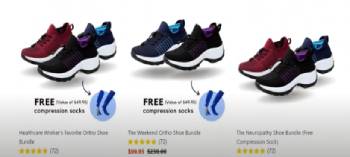
So, you’ve got a pair—maybe you’re braver than me, or you snagged them before reading this. Here’s how I kept mine in decent shape while they lasted. These tips might stretch their life, but don’t expect miracles.
Steps to Care for Them:
- Spot Clean Only: I grab a damp cloth with mild soap—think dish soap—and wipe the knit upper. No soaking; it’s not built for that.
- Air Dry Always: After a sweaty shift, I stuff them with newspaper and let them dry naturally. No heat—dryers’ll warp that sole fast.
- Brush the Sole: I use an old toothbrush to scrub dirt off the outsole. Keeps the grip from gunking up.
- Rotate Wear: I swap them with another pair every other day. Gives the cushion (what little there is) a breather.
- Store Smart: I toss them in a cool, dry closet—not a damp gym bag. Mold’s not your friend.
Extra Tips:
- Add a cheap odor-eater insert—I did after week one. Keeps the funk at bay.
- Don’t overstretch the knit. I ease them on with a shoehorn to avoid tearing.
- Check the soles weekly—mine started fraying early. Catch it before they’re trash.
- Skip heavy duty—light walks only. These can’t handle marathon shifts.
They’re low-maintenance, sure, but no amount of care fixes the core flaws. You’re polishing a cracked gem here.
Why I Ditched Them: The Breaking Point
Let’s get personal. After two weeks, I hit my limit. A 12-hour shift, patients everywhere, and my feet throbbing like I’d run a marathon barefoot. I’d added insoles, adjusted laces—still, nothing. Mid-break, I swapped them for my beat-up Skechers and felt instant relief. Comfort Ortho Wear wasn’t just underperforming; it was sabotaging me. I’d hoped for a savior—got a dud. You deserve better than that, and so do I. That’s when I boxed them up for good.
- What Could’ve Saved It: If Comfort Ortho Wear wants a redemption arc, here’s my two cents. Beef up that sole—add real cushioning, not cardboard vibes. Arch support? Make it legit, not a buzzword—contour it right. Durability’s a must; these fell apart too quick. And test them on real people—nurses, not mannequins. I’d give them another shot if they fixed that, but right now? Pass. You shouldn’t settle for half-baked either.
- The Bigger Picture: This flop got me thinking—what do I really need? Shoes that hug my arches, soak up impact, and last past a month. Comfort Ortho Wear taught me to skip the hype and chase the proof. I’m back to brands I trust—Skechers, Vionic—because my feet can’t afford experiments. You’ve got options too; don’t waste time on promises that don’t hold up. We’re on our feet too much for that.
Pros and Cons of Comfort Ortho Wear Shoes
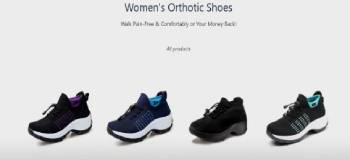
I’ve worn these enough to weigh the good against the bad. Here’s my take, raw and real—pros first, then the stuff that made me wince.
Pros:
- Lightweight Feel: They’re easy on your feet out of the box—like wearing socks with soles. I barely noticed the weight.
- Breathable Fabric: My feet didn’t sweat buckets, even after hours. That mesh lining does its job.
- Slip-Resistant Sole: On slick hospital floors, I didn’t slide once. A legit perk for my line of work.
- Stretchy Fit: The knit molds to your feet—great if you’ve got weird widths like me.
- Affordable Price: At $80-$90 on sale, it’s not a bank-breaker—cheaper than some ortho brands.
Cons:
- Zero Arch Support: My arches felt abandoned—no lift, no love. False advertising on that “orthopedic” claim.
- Hard Sole: Like walking on planks. My heels ached after a couple hours—plantar fasciitis folks, steer clear.
- Weak Cushioning: That “pillow-like support”? More like a thin napkin. My feet begged for mercy mid-shift.
- Durability Doubts: After a week, the sole’s edges looked worn. I’m not betting on long-term use.
- Fit Fixes Needed: Had to add insoles to make them bearable—why pay extra to patch a new shoe?
The pros tease you with potential, but the cons slap you back to reality. I can’t recommend these when they fail where it counts.
Comfort Ortho Wear Vs. Other Brands
Let’s see how Comfort Ortho Wear stacks up against the big dogs. I’ve tested a few of these myself, and others I’ve scoped out from coworkers’ raves. Here’s the showdown—100 words each, no sugarcoating.
- Comfort Ortho Wear Vs. Orthofeet Stretchable Shoes
Orthofeet’s my gold standard now. Their stretchable shoes have legit arch support—contoured insoles that cradle my feet. Comfort Ortho Wear’s flat sole can’t compete; Orthofeet’s cushioning actually softens my steps, not just pretends to. They’re pricier—$120ish—but built for plantar fasciitis, with wide toe boxes and durable outsoles. Comfort Ortho’s lightweight, sure, but it’s flimsy next to Orthofeet’s sturdy vibe. My feet felt pampered with Orthofeet; with Comfort Ortho, they just felt tired. No contest—Orthofeet wins.
- Comfort Ortho Wear Vs. Hoka One One Bondi
Hoka Bondi’s a beast—thick, bouncy soles that eat up impact. I borrowed a pair from a buddy; 12 hours later, my feet were still smiling. Comfort Ortho Wear’s hard sole and weak cushioning don’t even come close—Hoka’s like walking on marshmallows. They’re $150+, but the support’s unreal—great for nurses or runners. Comfort Ortho’s slip-resistant, but Hoka’s grip holds up too. If you want real ortho relief, Hoka’s the move. Comfort Ortho feels like a knockoff here.
- Comfort Ortho Wear Vs. Skechers Arch Fit
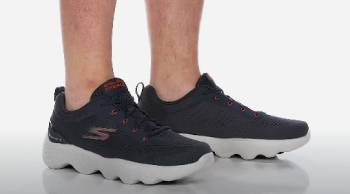
Skechers Arch Fit is my budget-friendly fallback—$80 and podiatrist-approved. The insole’s got real arch support, unlike Comfort Ortho Wear’s empty promises.
I wore these pre-Comfort Ortho; my heels thanked me after every shift. They’re breathable too, but the sole’s softer—less jarring than Comfort Ortho’s plank vibes.
Skechers lasts longer; Comfort Ortho’s already fraying. If you’re picking, Skechers gives you more bang without breaking the bank. Comfort Ortho’s a letdown next to this.
- Comfort Ortho Wear Vs. Brooks Addiction Walker
Brooks Addiction Walker’s a tank—$130, but built like it. I tried a coworker’s pair; the cushioning and stability blew Comfort Ortho Wear away. Brooks has a rocker sole that eases my stride—perfect for bad arches. Comfort Ortho’s “rocker design” is a joke; it’s flat and stiff. Brooks grips wet floors fine too, and the leather holds up. Comfort Ortho’s knit feels cheap by comparison. If you need serious support, Brooks is your guy—I’d ditch Comfort Ortho for these any day.
- Comfort Ortho Wear Vs. Vionic Walker Classic
Vionic’s Walker Classic is ortho royalty—$100 and packed with tech. I snagged a pair post-Comfort Ortho fiasco; the arch support’s spot-on, and the cushioning’s plush. Comfort Ortho Wear’s sole feels like concrete next to Vionic’s forgiving bounce. Vionic’s slip-resistant too, and the leather’s tougher than Comfort Ortho’s knit. My plantar pain eased with Vionic; Comfort Ortho made it worse. If you’re serious about foot health, Vionic’s worth it—Comfort Ortho’s a pretender in this league.
Also Read: My Thoughts On Hyper Arch Motion Shoes
Frequently Asked Questions (FAQs)
I assume you mean Comfort Ortho Wear—close enough! They’re real, shipping from comfortorthowear.com, but “legit” depends. I got my shoes, no scam there, yet reviews scream trouble—poor fit, dodgy refunds. My pair arrived fine, but the quality’s shaky. They’re not fake, just overhyped. Dig into Trustpilot; folks call out sketchy service. Buy if you dare, but don’t bet on bliss.
They’re lighter than my old Nikes—stretchy knit’s a plus—but support? Night and day. Regular shoes don’t claim ortho perks, yet my cheap runners outlasted Comfort Ortho’s flimsy cushioning. These promise more—stability, relief—but deliver less than a decent sneaker. If you need real ortho, they’re a step down from nothing special. Stick to basics over this.
On paper: lightweight, breathable, slip-resistant—nice for wet floors. I felt the airy vibe, and grip’s solid. But benefits like “arch support” or “pain relief”? Nope. My feet hurt more after wearing them. If you want mild comfort for short stints, maybe. For serious foot issues, they’re a bust—other brands do it better.
I wipe the knit with a soapy cloth—gentle, no soaking. Air dry with newspaper inside; heat kills them. Brush the sole for grip, rotate wear to slow breakdown. Store dry, not damp. It’s easy upkeep, but they wear fast anyway—mine’s already fading. Good luck keeping them alive.
Final Thoughts
Look, I tried to love Comfort Ortho Wear—light, breathable, grippy soles—but it’s a no-go. My feet ached, the support was a myth, and it couldn’t handle my shifts. Compared to Orthofeet, Hoka, or even Skechers, it’s outclassed—hard soles and weak cushioning don’t cut it. Don’t buy these hoping for relief; they’re a letdown dressed as a fix. Save your cash, grab something proven, and keep your feet happy. I’m done here—you should be too.

